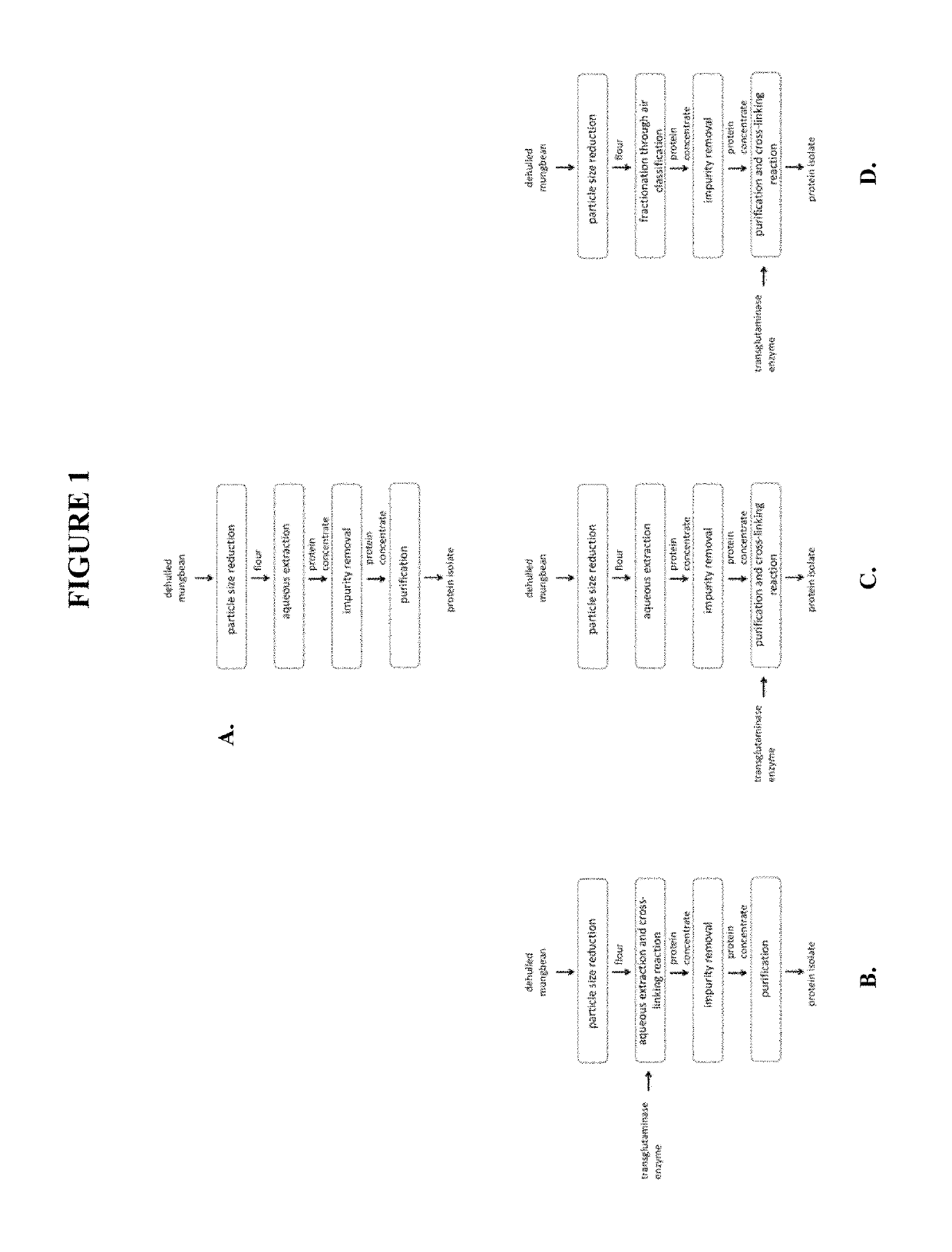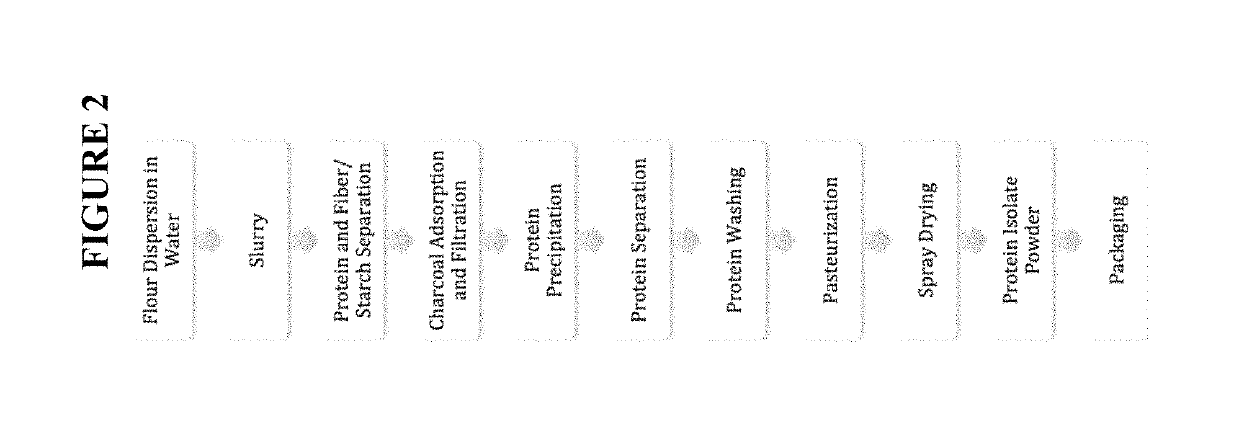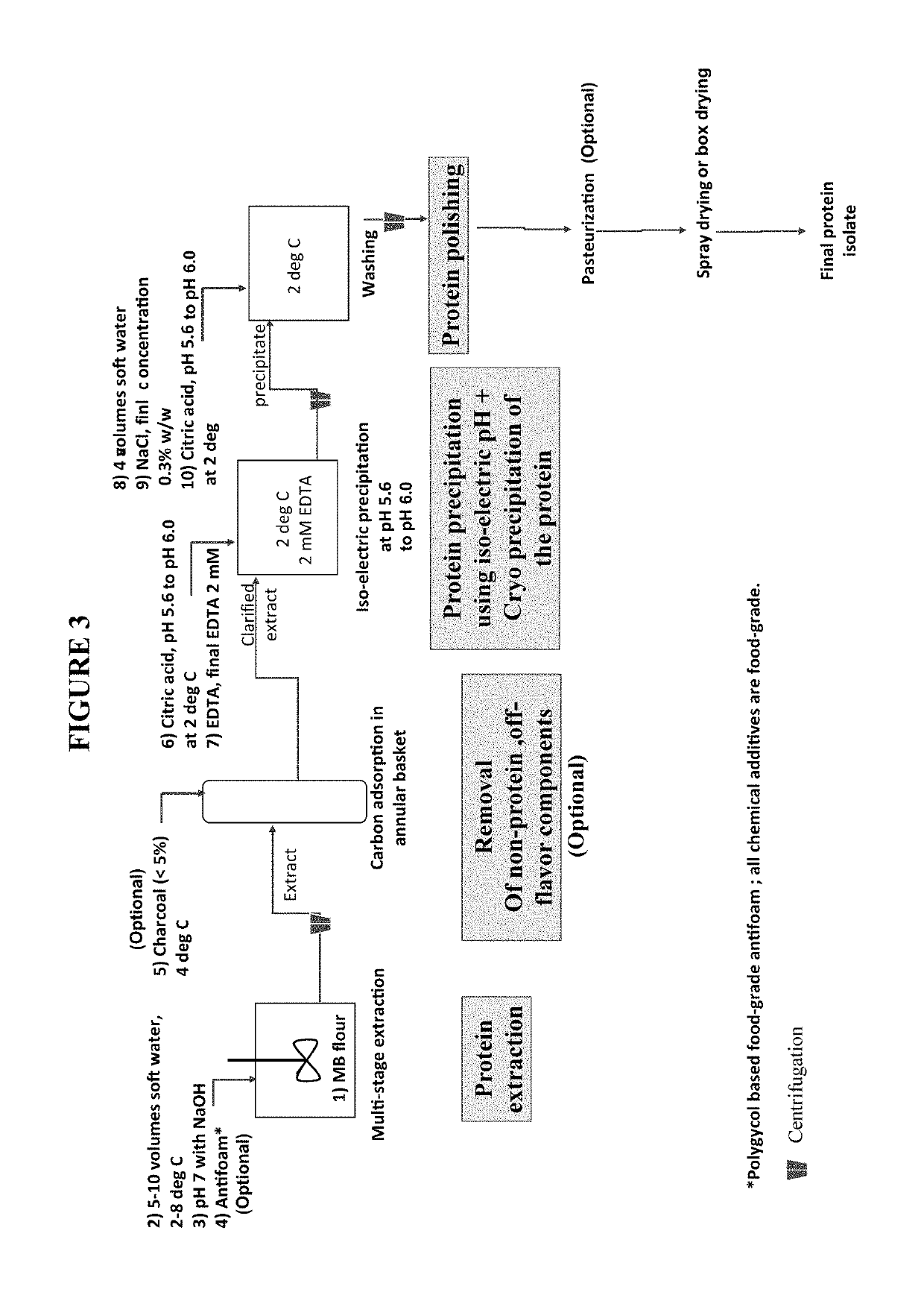Functional mung bean-derived compositions
a technology of compositions and mung bean seeds, applied in the field of mung bean-derived compositions, can solve problems such as unsuitable protein compositions for certain applications, and achieve the effect of reducing the activity of lipoxygenas
- Summary
- Abstract
- Description
- Claims
- Application Information
AI Technical Summary
Benefits of technology
Problems solved by technology
Method used
Image
Examples
example 40
7.40 Comparative Analysis of Meat Analogues
[0564]Meat analogue was prepared using mung bean protein isolate following the formulation shown in Table 35. Mung bean protein isolate was blended with water, oil, di sodium phosphate, salt and starch in the formula to make a homogenous mixture under medium to high shear mixing. The mix was then heated to temperatures between 25-95° C., followed by addition of enzyme. This material was then filled into casings to form cylindrical chubbs. The chubbs were maintained at 40-55° C. for 60-120 min followed by extrusion and cooking under pressure of 8-15 psig for 30-120 min. The chubbs were cooled and sliced into nuggets.
[0565]
TABLE 35IngredientRange (%)Water65-80Mung bean protein isolate20-40Oil2-8Disodium phosphate0.1-0.8Salt0.1-0.5Enzyme0.001-0.002Starch 0-0.5
[0566]Meat analogue samples were analyzed for their textural properties. Brookfield CT3 texture analyzer was used to carry out texture profile analyses. 25.4 mm cylindrical probe was us...
PUM
| Property | Measurement | Unit |
|---|---|---|
| gelation onset temperature | aaaaa | aaaaa |
| pH | aaaaa | aaaaa |
| pH | aaaaa | aaaaa |
Abstract
Description
Claims
Application Information
 Login to View More
Login to View More - R&D
- Intellectual Property
- Life Sciences
- Materials
- Tech Scout
- Unparalleled Data Quality
- Higher Quality Content
- 60% Fewer Hallucinations
Browse by: Latest US Patents, China's latest patents, Technical Efficacy Thesaurus, Application Domain, Technology Topic, Popular Technical Reports.
© 2025 PatSnap. All rights reserved.Legal|Privacy policy|Modern Slavery Act Transparency Statement|Sitemap|About US| Contact US: help@patsnap.com



